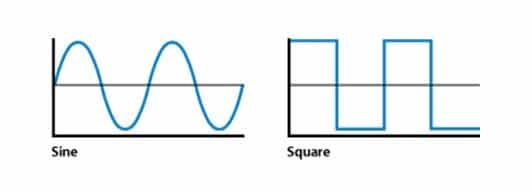Project Update: Received some clarity around the relay question (I’ll explain below) and we’ve closed any new firmware requests so that we can submit for ZigBee Certification (or CSA, I’m really not sure what it is). New ideas will be captured and put into a firmware upgrade in the future and the only thing we’re working on for the production run now is squashing any remaining bugs.
Targeting early May for a release – hopefully pre-orders can open in April once we have an official production scheduled. I’m going to be conservative with pre-orders this time!
Relay Question/Comments
I want to first thank @contactcr for bringing this up and for the rest of you who piled on and asked for clarity. This is exactly what the community is for and I want to share that because of you all bringing this up, we were able to make a last minute change as there was a misunderstanding (language barrier – no one’s fault – if anything, mine for not being super clear).
TLDR: We were able to add the relay function (as the hardware already supported it in 3-Way (Dumb Switch) mode) so that there’s more of a, “hard on/off” for single-pole settings. We were unable to put it in 3-Way (Aux) mode because of the way the smart switch detects signals from the traveler (and the aux and dumb mode detection is different). So, while the normal MOS + relay scenario we implemented works great and we haven’t had any complaints around flickering or safety concerns in on/off mode, at least there will be an override if someone experiences this.
Long Version:
NOTE: I am not an engineer so if I screw some technical terms up, I apologize – I understand the concepts of what’s happening, but I will likely mess up some of the vernacular.
When we first briefed the team on our requirements, we said that we wanted this switch to work in both a neutral and non-neutral setting (like our Red Series Dimmer) but also, if they could figure out how to get it to work in on/off mode, that would be a bonus.
Looking back, I can now see where the language barrier came into play. We told them that our current Red Series Dimmer had two relays in it as when it was put in 3-Way (Dumb) mode, you could hear a, “click” just like you hear in the Red Series On/Off. Keep in mind, none of us are engineers and we rely heavily on the expertise of our manufacturers (for better or worse – I know there are pro/cons for hiring internal vs outsourcing – not here to debate that lol). So, we figured they could just take our Dimmer switch and use the one relay (MOS) for the dimming functions and the other relay (the one that clicks) for the On/Off function.
When we received the switch, I remember thinking how there wasn’t a clicking for the on/off, but didn’t think much of it because the on/off worked great and even worked on my extremely cheap LED can lights (I live in a rental and the builder is notoriously cheap).
It wasn’t until @contactcr brought it up that I remembered not hearing the audible, “click” and I went into full panic mode lol.
Luckily, when testing the 3-Way (Dumb), I heard the, “click” and at least knew the relay was in there.
__
What we ultimately decided was that the current implementation of the switch will work just fine and has worked fine across 20+ beta testers and in internal testing (both here and at the manufacturer). But, in the rare case someone wanted the, “click” relay (or traditional switch relay), there should be a way to access it outside of 3-Way (Dumb) mode.
We were able to configure the firmware to give single-pole the ability to have the traditional relay. Unfortunately, this will not work in an auxiliary setting as that would require a major change to how things were designed (the way the smart switch detects the travelers in an aux vs dumb switch setting would ultimately confuse the switch).
So, we have the following options now:
-
Single Pole - On/Off (MOS) - Works in Neutral or Non-neutral
-
Single Pole - On/Off (MOS + Relay) - Only works in Neutral
-
Single Pole - Dimmer (MOS) - Works in Neutral or Non-neutral
-
Single Pole - Dimmer (MOS + Relay) - Works in Neutral only
-
3-Way (Dumb) - On/Off (MOS + Relay) - Works in Neutral only
-
3-Way (Dumb) - Dimmer (MOS + Relay) - Works in Neutral only
-
3-Way (Aux) - On/Off (MOS) - Works in Neutral or Non-neutral
-
3-Way (Aux) - Dimmer (MOS) - Works in Neutral or Non-neutral
Hope this helps clarify things and again, thank you so much for bringing this up @contactcr and for the rest of you guys for building on it. As mentioned, this is exactly why we have the community and the reason why I always say 1,000 project managers are always better than 1!
